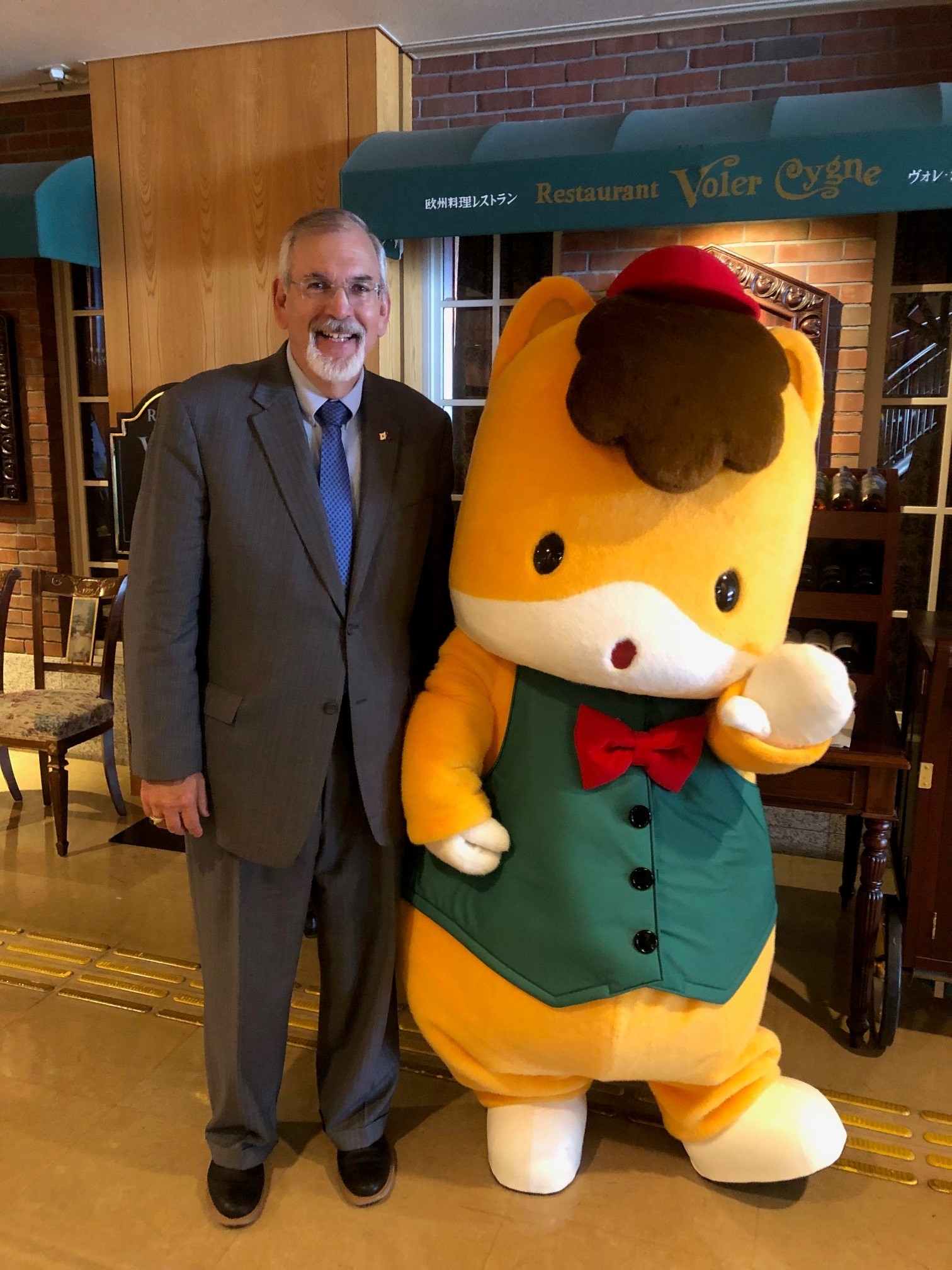Ask Harold Gutzwiller anything about his trips to Japan.
Just don’t ask him how many times he’s been.
“My first trip to Japan was in 1998 or 1999, so my guess is greater than 10,” the Hoosier Energy Manager of Economic Development said. “But it’s one of those things I should’ve kept track of.”
Gutzwiller took his latest unnumbered trip to the Far East this September, a feat he never imagined.
“I went the first time thinking, ‘This will probably be the only time I’ll ever get to go,’” he said. “I went the second time thinking, ‘Oh, this is pretty neat.’”
And, somehow, he’s kept going back ever since.
It’s all been thanks to the relationship between Japan and the state of Indiana, which boasts the most Japanese investments per capita in the United States. With over 320 firms and approximately 70,000 people employed by those companies, it is a significant part of the state’s economy.
Gutzwiller joined Indiana Governor Eric Holcomb and other representatives of the Indiana Economic Development Corporation (IEDC) for the first trip to Japan since 2019. They met with Japanese manufacturers to discuss collaboration across business, innovation and community, according to a press release while also taking part in the Midwest U.S.-Japan Association annual meeting, which will take place in Columbus, Ohio, next year.
That’s one of three primary functions of the trip. The other two are logical offshoots.
“One is to thank and recognize the Japanese investment in Indiana and work with those businesses who have invested here,” Gutzwiller said. “The other is to meet with potential investors who might make the jump into Indiana or expand their Indiana operations.”
While the state touts its connection to Japan, things are no different for Hoosier Energy and its members with Japanese firms employing nearly 20,000 workers in its service territory.
“Last time I looked, our members have over 100 MW of load utilized annually by Japanese firms in our territory,” Gutzwiller said. “That’s the rationale for us being involved. Additionally, we want to support the IEDC and the governor in their efforts.”
Hoosier Energy was the title sponsor for the Friends of Indiana reception, featuring remarks from not only Holcomb but U.S. Ambassador to Japan Rahm Emmanuel.
“Our sponsorship gave us a high profile with about 240 Japanese businessmen and women who attended that reception,” Gutzwiller said. “It gave us good visibility with that audience in Tokyo.”
It’s an audience that hasn’t been possible since the last trip to Japan in 2019, pre-COVID. But four years later, life seems to be much as it was before the pandemic.
“I think it’s back to business as usual,” Gutzwiller said. “I didn’t see anything out of the norm. In Japan in the past, you always saw some masks for whatever reasons, but I did not see any large numbers of people wearing masks. I actually thought we would see more than what we did.”

Hoosier Energy Manager of Economic Development Harold Gutzwiller poses with Japanese mascot, Gunma-chan.
What Gutzwiller did get to see was one of the unique aspects of Japanese culture, as a visit to Gunma Prefecture highlighted Japan’s fixation on mascots. The area located northwest of Tokyo is known for breeding horses, so the mascot is a cartoon pony named Gunma-chan who walks on two legs and has been featured in a self-titled anime cartoon.
“Everybody has a mascot – it is hilarious,” said Gutzwiller, who admittedly bought one as a souvenir. “Every prefecture has a mascot, most businesses have a mascot. It’s not just sports teams but actual governments. It’s pretty interesting.”
Not as interesting as the time actor Keanu Reeves was spotted at the Imperial Hotel bar and took a picture with the Indiana contingent in 2019, but each trip has its moments, however unexpected.
“You see something new each time,” Gutzwiller said. “Every time I’ve been in Tokyo, we’ve stayed at the Frank Lloyd Wright-designed Imperial Hotel except for once. Next to the Imperial Hotel, there was an office building with a Starbucks. One day, I just needed an iced tea, so I turned the corner and the building was gone. They had torn down this 20- or 30-story office building and that will be a new tower for the Imperial Hotel, which they will eventually tear down and rebuild even though it’s been there since 1923.”
Still, the focus is on business most of the time, and doing business in Japan comes with a different culture.
“Yes does not always mean yes,” Gutzillwer noted. “That’s changing some, because of how much business most of these folks are doing in the United States.
“Meetings are still very structured. The Japanese always line up according to the rank of the individuals, so if you’re bringing five people in meeting, they will sit across from five people of equal rank. It’s very prescribed where you sit, and they are much more polite than we are.”